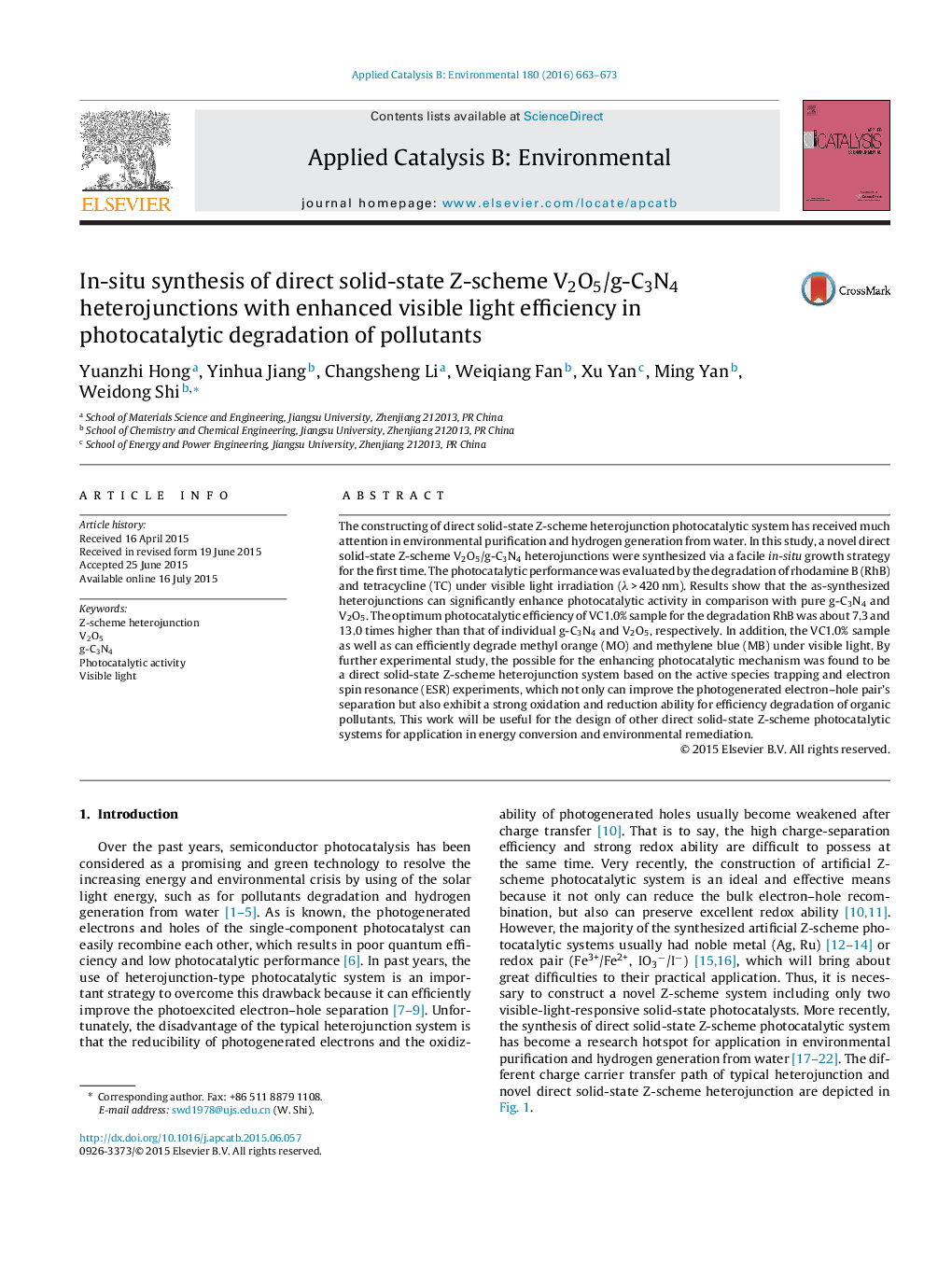| کد مقاله | کد نشریه | سال انتشار | مقاله انگلیسی | نسخه تمام متن |
|---|---|---|---|---|
| 45286 | 46407 | 2016 | 11 صفحه PDF | دانلود رایگان |

• The V2O5/g-C3N4 heterojunctions were synthesized by a in-situ growth strategy.
• The catalysts showed excellent visible-light-driven photocatalytic activity.
• The enhanced photocatalytic mechanism was a solid-state Z-scheme heterojunction.
• The catalysts can be a good candidate for application in environmental purification.
The constructing of direct solid-state Z-scheme heterojunction photocatalytic system has received much attention in environmental purification and hydrogen generation from water. In this study, a novel direct solid-state Z-scheme V2O5/g-C3N4 heterojunctions were synthesized via a facile in-situ growth strategy for the first time. The photocatalytic performance was evaluated by the degradation of rhodamine B (RhB) and tetracycline (TC) under visible light irradiation (λ > 420 nm). Results show that the as-synthesized heterojunctions can significantly enhance photocatalytic activity in comparison with pure g-C3N4 and V2O5. The optimum photocatalytic efficiency of VC1.0% sample for the degradation RhB was about 7.3 and 13.0 times higher than that of individual g-C3N4 and V2O5, respectively. In addition, the VC1.0% sample as well as can efficiently degrade methyl orange (MO) and methylene blue (MB) under visible light. By further experimental study, the possible for the enhancing photocatalytic mechanism was found to be a direct solid-state Z-scheme heterojunction system based on the active species trapping and electron spin resonance (ESR) experiments, which not only can improve the photogenerated electron–hole pair’s separation but also exhibit a strong oxidation and reduction ability for efficiency degradation of organic pollutants. This work will be useful for the design of other direct solid-state Z-scheme photocatalytic systems for application in energy conversion and environmental remediation.
Figure optionsDownload as PowerPoint slide
Journal: Applied Catalysis B: Environmental - Volume 180, January 2016, Pages 663–673